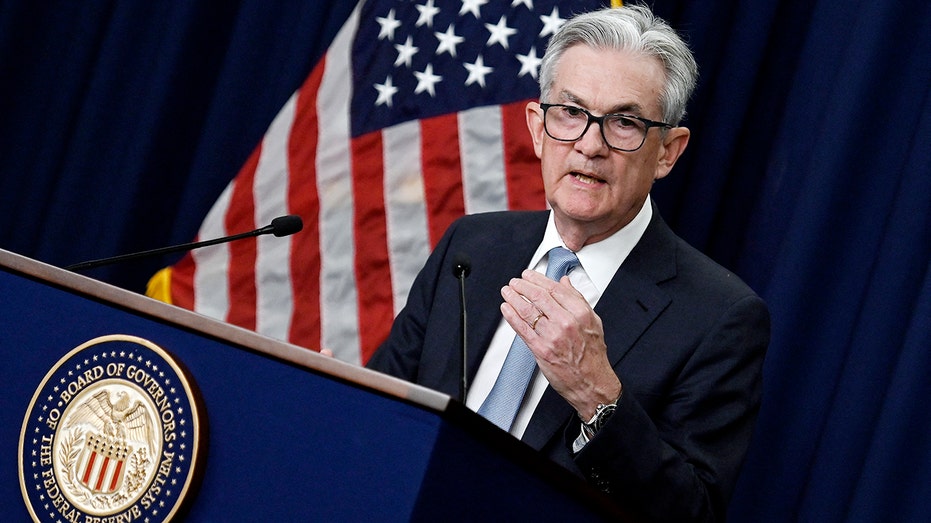Inflation eases in December to 6.5%, but prices remain stubbornly high
Inflation still running about three times higher than pre-pandemic average
Fed's Jerome Powell won't back off inflation narrative: Kenny Polcari
SlateStone Wealth chief market strategist Kenny Polcari and former Dallas Fed adviser Danielle DiMartino Booth discuss if inflation is stabilizing faster than anticipated on 'Cavuto: Coast to Coast.'
Inflation continued to cool in December, the latest sign that painfully high consumer prices are finally beginning to loosen their stranglehold on the U.S. economy.
The Labor Department said Thursday that the consumer price index, a broad measure of the price for everyday goods including gasoline, groceries and rents, fell 0.1% in December from the previous month. Prices climbed 6.5% on an annual basis.
Those figures were both in line with forecasts by Refinitiv economists, potentially giving the Federal Reserve a reason to further slow its aggressive interest rate hike campaign when policymakers meet next month.
It marked the slowest annual inflation rate since October 2021 and the slowest monthly rate since April 2020, at the height of the COVID-19 lockdowns. Still, inflation remains about three times higher than the pre-pandemic average, underscoring the persistent financial burden placed on millions of U.S. households by high prices.
MARKETS MAY BE UNDERESTIMATING THE THREAT OF HIGH INFLATION, BLACKROCK WARNS
Core prices – which strip out the more volatile measurements of food and energy – climbed 0.3% in December from the previous month, up from 0.2% in November. From the same time last year, core prices jumped 5.7%. Those figures were also in line with economists' expectations.
Stocks jumped after the report showed a dip in prices last month, with the Dow Jones Industrial Average climbing 146 points. S&P futures added 0.5%, while Nasdaq Futures rose about 0.6%.
"Today’s CPI reading is another sign that inflation is heading in the right direction and indicates the peak is likely in the rear view," said Mike Loewengart, the head of model portfolio construction at Morgan Stanley Global Investment Office. "But we aren’t out of the woods yet, as it is still well-above the Fed’s target rate and the Fed has remained adamant that they will keep rates high to bring inflation back to normal levels."
| Ticker | Security | Last | Change | Change % |
|---|---|---|---|---|
| I:DJI | DOW JONES AVERAGES | 44736.57 | +440.06 | +0.99% |
| I:COMP | NASDAQ COMPOSITE INDEX | 19054.835014 | +51.18 | +0.27% |
| SP500 | S&P 500 | 5987.37 | +18.03 | +0.30% |
Scorching-hot inflation has created severe financial pressures for most U.S. households, which are forced to pay more for everyday necessities like food and rent. The burden is disproportionately borne by low-income Americans, whose already-stretched paychecks are heavily impacted by price fluctuations.
Americans saw some real reprieve last month in the form of lower energy costs, which fell 6.1% in December. Gas prices dropped 12.5% over the month, the biggest contributor to the overall headline decline in inflation in December. The cost of airline tickets and used cars also fell.

Shoppers are seen in a Kroger supermarket on Oct. 14, 2022, in Atlanta. (Elijah Nouvelage/AFP via / Getty Images)
Other price gains proved persistent and stubbornly high in December: The cost of groceries climbed 0.3%, putting the 12-month increase at 11.8%. Consumers paid more for items like eggs, cereal, rice, butter and fresh vegetables, including potatoes, lettuce and tomatoes.
Shelter costs, which account for about 40% of the core inflation increase, rose 0.7% for the month and are up 7.5% over the past year.
AMERICANS SEE INFLATION COOLING FURTHER OVER THE NEXT YEAR, NY FED SURVEY SHOWS
Rent costs jumped 0.8% over the month and 8.3% on an annual basis. Rising rents are a concerning development because higher housing costs most directly and acutely affect household budgets. Another data point that measures how much homeowners would pay in equivalent rent if they had not bought their home, climbed 0.8% from the previous month.

Federal Reserve Chair Jerome Powell speaks during a news conference on interest rates, the economy and monetary policy actions, at the Federal Reserve Building in Washington, D.C., on June 15, 2022. (Photo by OLIVIER DOULIERY/AFP via Getty Images / Getty Images)
With food and shelter costs continuing to march higher, U.S. households are facing increased financial pressure. Average hourly earnings declined 1.7% in December from the previous year on an inflation-adjusted basis. However, for the first time in months, Americans' pay was not eroded by inflation. Earnings actually increased by 0.4% from November to December when factoring in the 0.1% decline in consumer prices, according to a separate BLS report.
The report will have significant implications for the Federal Reserve, which has taken drastic action to quell runaway inflation. Central bank officials approved seven straight interest rate hikes in 2022 and indicated they have more work to do this year.
CLICK HERE TO READ MORE ON FOX BUSINESS
Economists anticipate the inflation decline in December could pave the way for smaller rate hikes in February and March, before the central bank pauses the increases altogether to assess the broader economic impact of tighter monetary policy.
"The ongoing slowing in inflation provides the Federal Reserve room and reason to pare the size of its policy rate increases to 25bps," said Kathy Bostjancic, the chief economist at Nationwide. "While it shows that the monetary policy tightening so far has been successful, with the annual rate of headline and core readings well above the 2% target level, the Fed is not done tightening."

